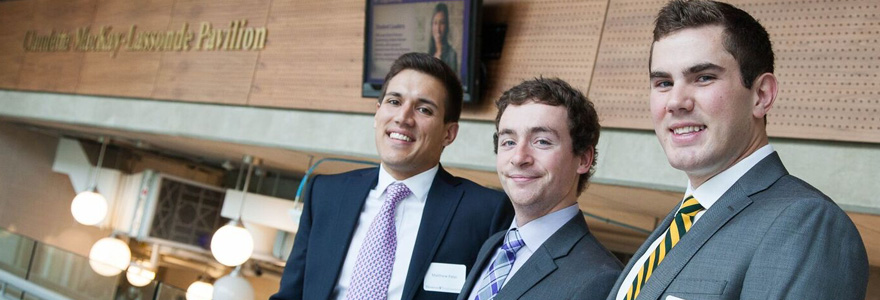Claudette MacKay-Lassonde Pavilion
Supporting Environmental Management and a Sustainable Future
The Claudette MacKay-Lassonde Pavilion (CMLP) officially opened its doors on Saturday, October 3, 2009. It is a 45,000 square-foot, $20-million facility, featuring advanced environmentally sustainable construction technologies and methodologies. The CMLP houses research geared towards green technologies, processes and materials.
The CMLP hosts space for student engagement and educational experiences through hands-on design opportunities. Areas are available in the facility for graduate student educational facilities, office spaces, and areas designed to promote collaborative learning and informal idea and information exchange. Two floors of the building house laboratories for leading-edge environmental research.
Funding for the CMLP was made possible through a generous $5-million gift from the Lassonde Family Foundation (the largest ever gift to Western Engineering), a grant of $7.2-million from the Canada Foundation for Innovation, and $7 million from the University. The remainder has been raised from the private sector and alumni contributions.
LEED Certification
The CMLP is Western’s first LEED (Leadership in Energy & Environmental Design) certified building. At the end of 2010, the CMLP was designated LEED Gold by the Canadian Green Building Council. The CMLP is the second building in London, Ontario to achieve LEED Gold status, the first being the Sisters of St. Joseph’s new residence.
Unique Areas of the CMLP
- A green roof covered with flats of drought-resistant sedum, a hardy garden plant. The soil and plants insulate the building for sound, along with increasing the heating and cooling efficiency.
- A 1kw wind turbine and two 1kw photovoltaic arrays (solar panels) are also located on the roof to help generate electricity for the building.
- The TD Friends of the Environment Foundation BioDynamic Garden located outside the CMLP is a natural space with native plants that will be a home to birds and butterflies, as well as a tranquil space for people.
- Other green features of the building include: a cistern and greywater system, geothermal heating/cooling, designated spots for carpoolers, use of local and recycled materials, and roughly 40 per cent energy efficiency over similar standard constructions.
Sustainable Design Features of the Building
- 50% reduced construction disturbance through:
- maximizing useable floor space within building footprint; and
- minimizing work area during construction.
- 25% decrease in stormwater runoff through:
- use of permeable paving in courtyard; and
- collection of rainwater from roof in underground cistern
- 90% reduction in urban heat island effect through:
- increased landscaped space;
- 100% elimination of municipal water use for irrigation; and
- use of drought-tolerant plant materials.
- 65% reduction of municipal water use indoors through:
- use of rainwater from cistern for toilet and urinal flushing;
- low flow water fixtures throughout; and
- dual flush toilets.


